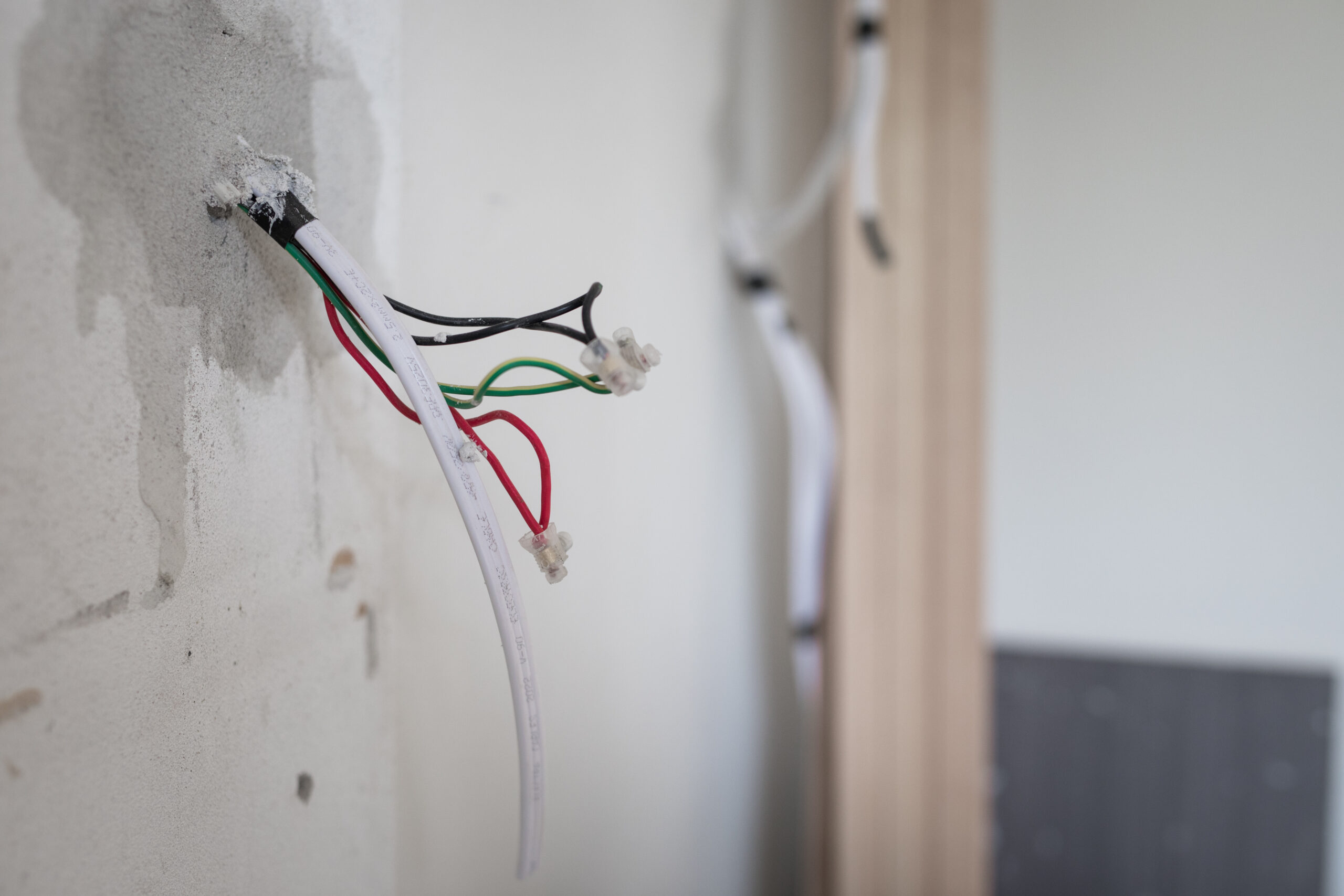Low-Voltage Wiring vs. Traditional Electrical Wiring: What’s the Difference?
When wiring commercial buildings, industrial facilities, and modern homes, it’s important to understand the differences between low-voltage wiring and traditional electrical wiring.
Low-voltage wiring is used for specific applications, while traditional wiring is used for general electrical needs. Knowing these differences can help ensure safety and efficiency in electrical installations.
Both systems are important for powering different technologies. However, they have different purposes and need special installation methods.
If you own a business or manage a property, you may need to upgrade your infrastructure or renovate. It’s important to understand when to use different types of wiring and why. This knowledge can save you time, money, and future problems.
Understanding the Basics of Electrical Wiring
Electrical wiring is the base of a building’s structure. It carries power to lights, appliances, and other devices. However, not all wiring is created equal.
Traditional electrical wiring is made to carry high-voltage currents for power distribution. Low-voltage wiring is used for sending data and for special tasks that don’t require much power. What is traditional electrical wiring?
Traditional electrical wiring is designed to carry standard voltage levels, typically 120V or 240V in commercial and residential settings. This type of wiring powers everyday appliances such as:
- Lighting fixtures
- HVAC systems
- Refrigerators
- Industrial machinery
- Electrical outlets
Traditional electrical wiring carries high voltage levels. It must follow strict safety codes and rules. This helps prevent hazards like electrical fires and shocks. This wiring requires heavier insulation, grounding, and circuit protection to handle the load demands of high-power equipment.
What Is Low-Voltage Wiring?
Low-voltage wiring is used for transmitting signals rather than high-power electricity. It typically carries 50 volts (V) or less and is commonly used for:
- Security cameras and alarm systems
- Internet and network cabling (Ethernet, fiber optic, coaxial)
- Telephone and intercom systems
- Audio/visual installations
- Access control systems
- Smart home automation
Low-voltage cabling is different from traditional wiring. It does not need heavy insulation or conduit protections. This makes it more flexible and easier to install. This type of wiring is integral to modern business operations, enabling seamless communication, security, and digital connectivity.
When Should You Use Low-Voltage Wiring?
Low-voltage wiring is an essential component of modern infrastructure, particularly in businesses, industrial settings, and smart buildings. Here are some scenarios where low-voltage wiring is the best option:
1. Structured Cabling for Networking
Businesses rely on Ethernet and fiber optic cables to support high-speed internet, internal communication, and seamless workflow. Low-voltage networking systems provide the backbone for digital operations, ensuring reliable connectivity.
2. Security and Surveillance Systems
Low-voltage wiring is ideal for CCTV cameras, access control panels, and alarm systems. These systems require continuous data transmission without the need for high power loads, making low-voltage wiring the safest and most efficient solution.
3. Audio-Visual and Communication Systems
From conference rooms with integrated sound systems to PA systems in schools and commercial buildings, low-voltage cabling supports high-quality communication and entertainment infrastructure.
4. Smart Technology and Automation
The rise of smart buildings has increased demand for low-voltage wiring in lighting controls, automated blinds, thermostats, and sensor-driven technologies. These systems rely on continuous, low-power data exchange to optimize energy efficiency and security.
Installation Considerations for Low-Voltage Systems
While low-voltage wiring is easier to install than traditional electrical wiring, it still requires proper planning and expertise. Here are some key factors to consider:
1. Future-Proofing Your Infrastructure
As technology evolves, businesses must plan for scalability. Using category 6 (Cat6) or fiber optic cabling for networking ensures that systems can handle increasing bandwidth demands without frequent upgrades.
2. Compliance with Building Codes
While low-voltage wiring does not require the same strict codes as high-voltage wiring, it must still comply with National Electrical Code (NEC) standards and industry best practices to ensure safety and efficiency.
3. Proper Cable Management and Labeling
Unlike high-voltage wiring that is typically enclosed in walls or conduit, low-voltage systems often run in dedicated cable trays or open spaces. Proper cable organization helps prevent interference, signal loss, and maintenance issues down the road.
Why Professional Installation Matters
Many business owners may attempt to install low-voltage wiring as a DIY project or use an inexperienced contractor. However, improper installation can lead to network failures, security vulnerabilities, and increased downtime. Partnering with a professional ensures:
- Correct cable selection and routing for maximum performance
- Efficient and secure installation to prevent interference
- Compliance with local and national regulations
___________________________________________________________
Both low-voltage wiring and traditional electrical wiring are essential for modern businesses, but they serve different purposes. If you’re planning an upgrade, new installation, or expansion of your facility’s data infrastructure, security system, or smart automation, low-voltage wiring is the right choice.
Working with a knowledgeable provider ensures that your system is installed efficiently, securely, and future-proofed for technological advancements. If you want to improve your business’s connectivity, security, or communication systems, contact Belasco Electric today. They can help with your low-voltage wiring needs.





